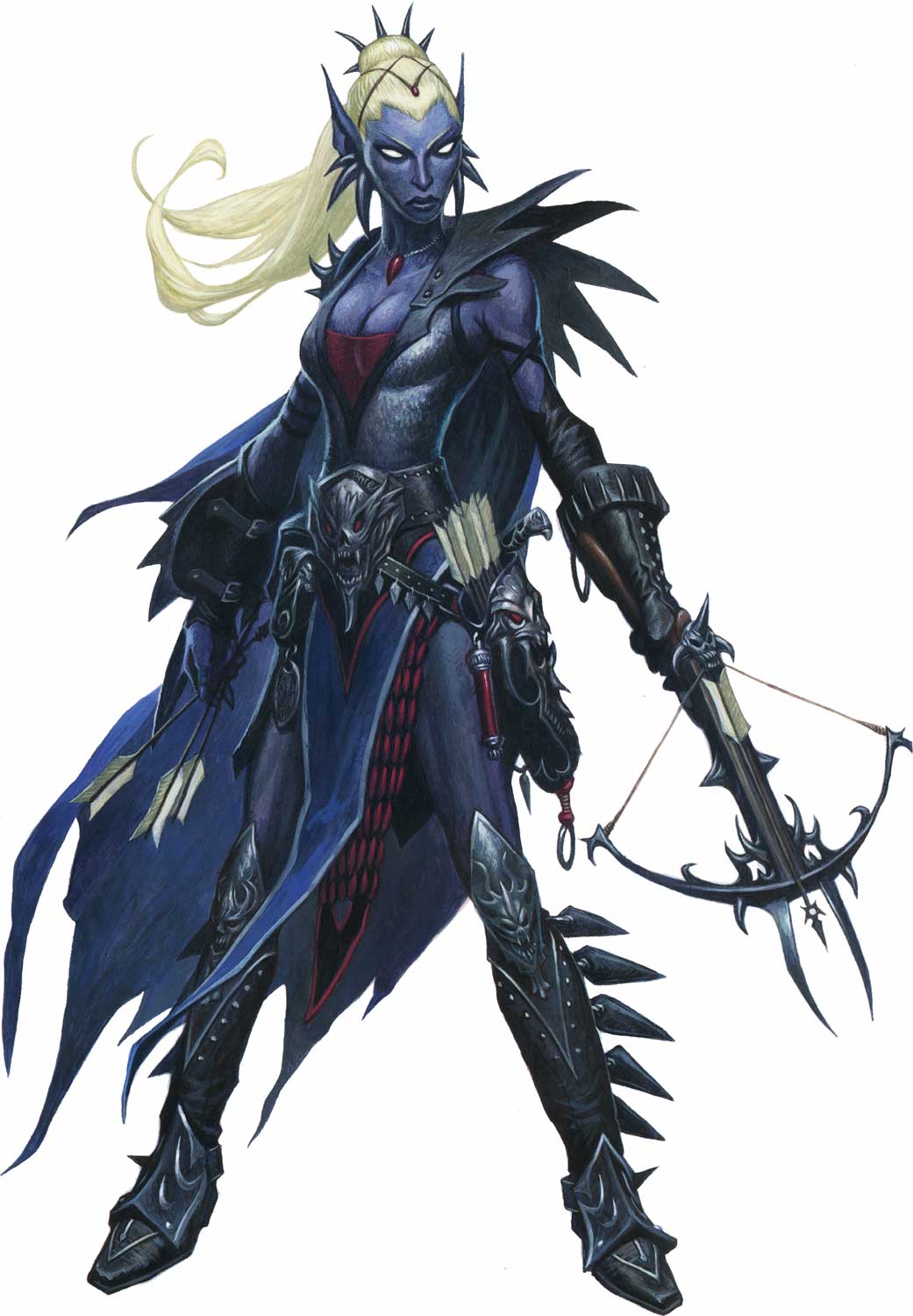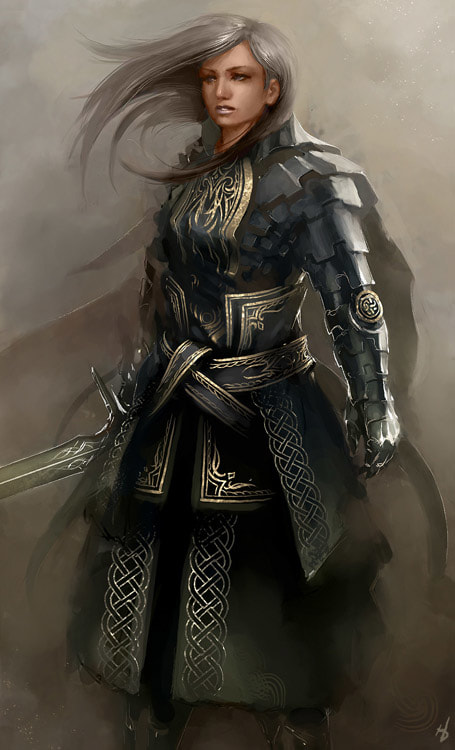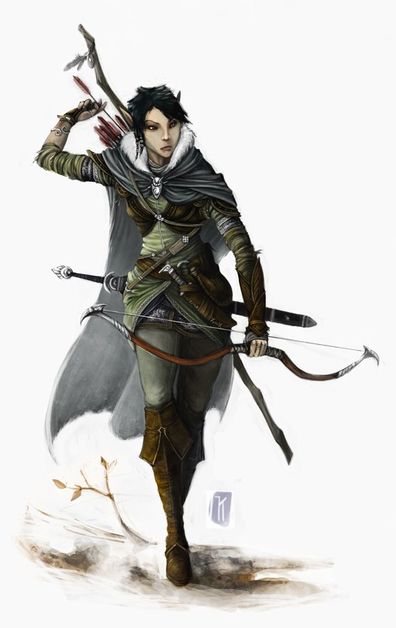In a time before Facebook, World of Warcraft, and Massive Multiplayer Online RPGs, there once existed simply a game. Forged by the hands of nerds, crafted in the minds of geeks, and so advanced in its advanciness it would take a whole second edition to contain all its mighty geekery.
ABOUT THE GAME
Dungeons and Dragons (popular abbreviations include: D&D and/or DnD) is a tabletop, pencil and paper role-playing game created by Gary Gygax and Dave Arneson in the 1970s. It is part board game: designed to be played in person around a table with a group of friends, it uses maps like a gaming board and game pieces to track positions, and it uses dice to create the unpredictability of encounters and combat. It is also part role-playing: an interactive storytelling experience similar to an improvised game, where the players are the improv actors, the Dungeon Master (DM) functions like an improv referee or director, and the written adventure module functions as the audience suggestions, which dictates what challenges and rewards the players will encounter. Since its original publication in 1974, the game has been revised and re-released with different rules (editions). By 1995, the most recent version of the game was called Advanced Dungeons & Dragons 2nd Edition, published 6 years prior.
HOW TO PLAY
Each player controls the actions of a single character, known as a Player Character (PC). The player will have invented the character themselves based on the options in the game. The player chooses their character's race (human, elf, dwarf, etc), class (fighter, wizard, cleric, etc), and other options that help determine how skiled the character is performing different tasks such as fighting or casting magic spells. The player records this information on their character sheet, a piece of paper that tracks all the game rules about their character.
During the game, the Dungeon Master (DM) will present different situations and challenges for the PCs to face. It is up to the PCs to determine how they want to overcome these challenges. The players will often speak "in character" as if acting out the part. When performing an activity that has a chance of failure, such as swinging a sword or sneaking down a dark passage, the DM will ask the player to roll the dice to see how well they did. Between the dice roll and the character's statistics as listed on the character sheet, the DM determines the degree of success or failure of the activity.
During the game, the Dungeon Master (DM) will present different situations and challenges for the PCs to face. It is up to the PCs to determine how they want to overcome these challenges. The players will often speak "in character" as if acting out the part. When performing an activity that has a chance of failure, such as swinging a sword or sneaking down a dark passage, the DM will ask the player to roll the dice to see how well they did. Between the dice roll and the character's statistics as listed on the character sheet, the DM determines the degree of success or failure of the activity.
RACES
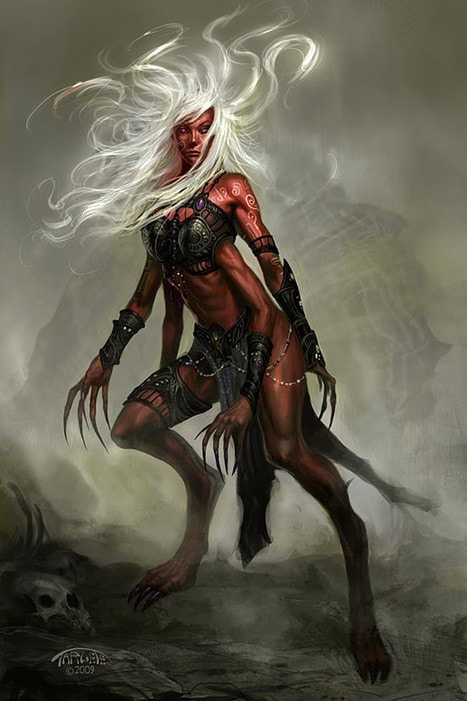
DEMON QUEEN
Demons were not a playable race in the Second Edition D&D. Demons are a type of fiend and they live in what is called the Abyss. The Abyss was created in 1978 as a home for these evil creatures. In the first edition players handbook it was known as “the 666 layers of the Abyss of absolute chaotic evil.” In the second edition the demons were known as Tanar’ri. Demons have no ruler, but they can amass enough power to rule demonic beings. There is no one type of demon or "Demon Queen." Some named Demon Queens include: Zuttgmoy, the Demon Queen of Fungi, and Lolth, the Demon Queen of Spiders. The art on the left is of Lamashtu, the Demon Queen and Mother of Beasts. Alignment: Chaotic Evil.
Demons were not a playable race in the Second Edition D&D. Demons are a type of fiend and they live in what is called the Abyss. The Abyss was created in 1978 as a home for these evil creatures. In the first edition players handbook it was known as “the 666 layers of the Abyss of absolute chaotic evil.” In the second edition the demons were known as Tanar’ri. Demons have no ruler, but they can amass enough power to rule demonic beings. There is no one type of demon or "Demon Queen." Some named Demon Queens include: Zuttgmoy, the Demon Queen of Fungi, and Lolth, the Demon Queen of Spiders. The art on the left is of Lamashtu, the Demon Queen and Mother of Beasts. Alignment: Chaotic Evil.
|
DARK ELF
Ancient divides among the elven people resulted in three main subraces: high elves, wood elves, and dark elves, who are commonly called drow. These elves used to be part of the larger elf community who lived in the world’s forests; however, they now inhabit underground caves and tunnels. These elves split from the original race in a large civil war that ensued when a part of the race followed the path of evil. The Drow were driven into the underworld where they scheme and resent those who sent them there. Historically, gamers have criticized Wizards of the Coast for the "dark elf" race, as they are typically pictured with dark skin. Gamers have called the connection of dark skin to evil as racist. Over time, the race has expanded to include varying shades of skin tone. The image on the right is a Fourth Edition Drow with blue skin and white hair. Alignment: Chaotic Evil. |
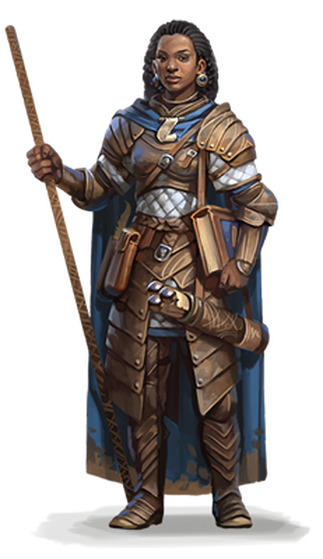
HUMAN
The baseline race in Second Edition D&D. The youngest of the races, humans are ambitious and daring, having something to prove. Their history is one of conquest and trade. They are the most adaptable of all the races, excelling in many areas as "jacks of all trades." Although humans have the shortest lifespan, they are the most populous race. They vary greatly by region and culture, and they are known for their great diversity. Adventuring humans do so for glory and power or for great causes in which they believe. Alignment: Any.
The baseline race in Second Edition D&D. The youngest of the races, humans are ambitious and daring, having something to prove. Their history is one of conquest and trade. They are the most adaptable of all the races, excelling in many areas as "jacks of all trades." Although humans have the shortest lifespan, they are the most populous race. They vary greatly by region and culture, and they are known for their great diversity. Adventuring humans do so for glory and power or for great causes in which they believe. Alignment: Any.
CLASSES
|
FIGHTER
Perhaps the most diverse class of characters: knights, overlords, royal champions, elite foot soldiers, mercenaries, and bandit kings are all fighters. The shared characteristic of all fights is an unparalleled mastery with weapons and armor and a thorough knowledge of combat skills. Fighters learn the basics of all combat styles. Every fighter can swing an axe, fence with a rapier, wield a longsword or a greatsword, use a bow, and even trap foes in a net with some degree of skill. Likewise, a fighter is adept with shields and every form of armor. Beyond that basic degree of familiarity, every fighter specializes in certain styles of combat. Some concentrate on archery, some on fighting with two weapons at once, and some on augmenting their martial skills with magic. This combination of broad general ability and extensive specialization makes fighters superior combatants on battlefields and in dungeons alike. |
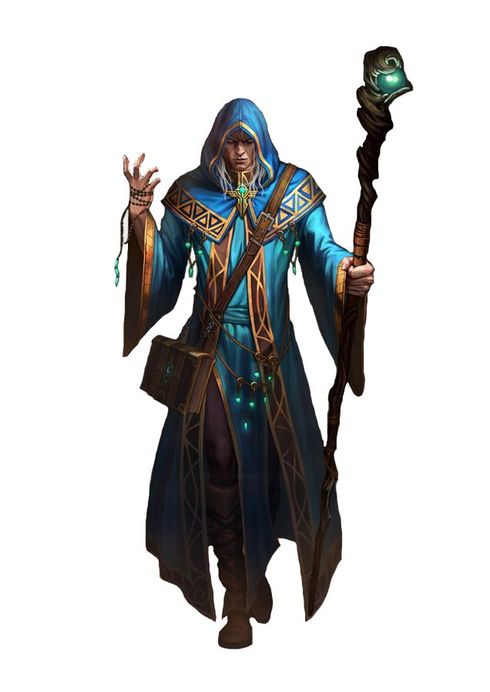
MAGE
Mages can be a human, elf, or a half-elf (half-human and half-elf). Mages, unlike wizards, do not need to specialize in any school of magic, so they can do a wider range of spells; however, they do not have the ability to learn as many specialized spells. Mages belong under the larger class of Wizard because they are spell casters and because of this they use spells as tools, weapons, and armor. To learn a spell, a mage must study the spell from a spell book. Intelligence is the prime requisite for mages to have because this is what allows them to study magic spells and hone their skills. From the Second Edition Player's Handbook: "Mages have no historical counterparts; they exist only in legend and myth. However, players can model their characters after such legendary figures as Merlin, Circe, or Medea. Accounts of powerful wizards and sorceresses are rare, since their reputations are based in no small part on the mystery that surrounds them. These legendary figures worked toward secret ends, seldom confiding in the normal folk around them."
Mages can be a human, elf, or a half-elf (half-human and half-elf). Mages, unlike wizards, do not need to specialize in any school of magic, so they can do a wider range of spells; however, they do not have the ability to learn as many specialized spells. Mages belong under the larger class of Wizard because they are spell casters and because of this they use spells as tools, weapons, and armor. To learn a spell, a mage must study the spell from a spell book. Intelligence is the prime requisite for mages to have because this is what allows them to study magic spells and hone their skills. From the Second Edition Player's Handbook: "Mages have no historical counterparts; they exist only in legend and myth. However, players can model their characters after such legendary figures as Merlin, Circe, or Medea. Accounts of powerful wizards and sorceresses are rare, since their reputations are based in no small part on the mystery that surrounds them. These legendary figures worked toward secret ends, seldom confiding in the normal folk around them."
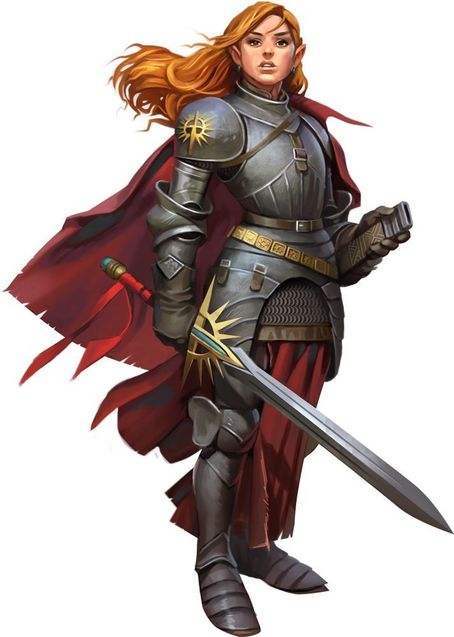
PALADIN
Originally a subclass of the Warrior, and then the Fighter, class, the paladin is a holy knight, crusading in the name of good and order, and is a divine spellcaster. Although any race can be a Paladin now, they were originally meant for Humans only. From the First through Third editions, paladins were required to maintain the Lawful Good alignment.
In addition, compared to other classes the paladin class has one of the most restrictive codes of conduct in their single-mindedness and utter devotion to good. Paladin characters are expected to demonstrate and embody goodness. Failure to maintain a lawful good alignment or adhere to the code of conduct causes paladins to lose their paladin status and many of their special abilities until they are able to atone. The strictness of these rules have lessened in future editions; for example, in Fourth Edition, paladins cannot lose their title or status for disagreeable acts.
Originally a subclass of the Warrior, and then the Fighter, class, the paladin is a holy knight, crusading in the name of good and order, and is a divine spellcaster. Although any race can be a Paladin now, they were originally meant for Humans only. From the First through Third editions, paladins were required to maintain the Lawful Good alignment.
In addition, compared to other classes the paladin class has one of the most restrictive codes of conduct in their single-mindedness and utter devotion to good. Paladin characters are expected to demonstrate and embody goodness. Failure to maintain a lawful good alignment or adhere to the code of conduct causes paladins to lose their paladin status and many of their special abilities until they are able to atone. The strictness of these rules have lessened in future editions; for example, in Fourth Edition, paladins cannot lose their title or status for disagreeable acts.
CREATURES
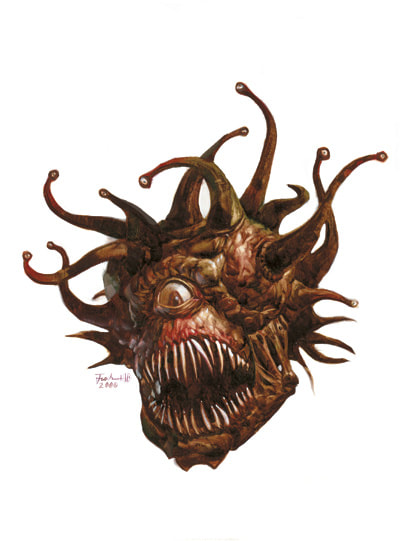
BEHOLDER
Beholders are creatures that are a large orb dominated by a central eye. Typically, these creatures are deadly adversaries and can levitate. They are solitary creatures, usually, but they can be found in large communities deep beneath the earth under the dominion of their hive mother, the beholder in charge of all other beholders in the dominion. Beholders have one big eye and many other smaller eyes each of which has a different function (of spell). These creatures are hateful and aggressive and love to dominate and attack other races, including other Beholders. They will usually attack immediately; however, they do have a chance of being negotiated with before killing their foe.
Beholders are creatures that are a large orb dominated by a central eye. Typically, these creatures are deadly adversaries and can levitate. They are solitary creatures, usually, but they can be found in large communities deep beneath the earth under the dominion of their hive mother, the beholder in charge of all other beholders in the dominion. Beholders have one big eye and many other smaller eyes each of which has a different function (of spell). These creatures are hateful and aggressive and love to dominate and attack other races, including other Beholders. They will usually attack immediately; however, they do have a chance of being negotiated with before killing their foe.
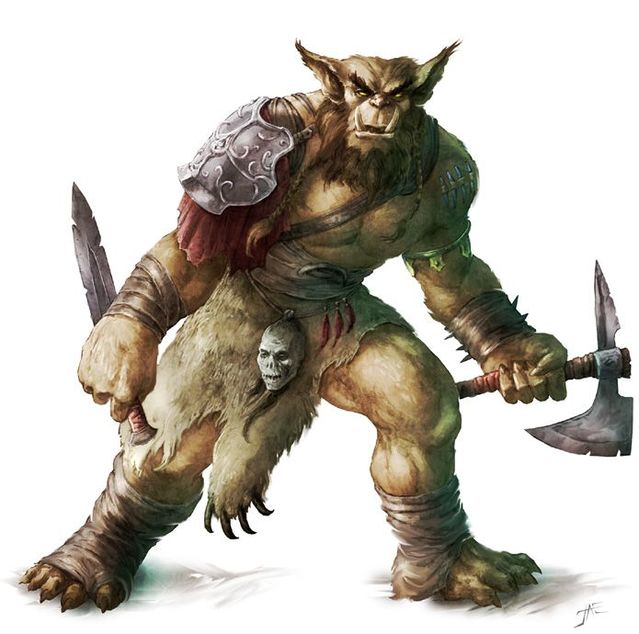
BUGBEAR
Bugbears are the cousins of the much smaller goblin. They are typically very tall and muscular creatures who have thick course hair that ranges from a yellowish color to a brown and brick-red color. Bugbears live in caves and underground locations and so they are well-adapted to light and dark areas. They survive primarily by hunting and will kill and eat anything including humans, goblins, and any other monster smaller than themselves. Bugbears are territorial and intruders are used for food and treasure and even slaves.
Bugbears are the cousins of the much smaller goblin. They are typically very tall and muscular creatures who have thick course hair that ranges from a yellowish color to a brown and brick-red color. Bugbears live in caves and underground locations and so they are well-adapted to light and dark areas. They survive primarily by hunting and will kill and eat anything including humans, goblins, and any other monster smaller than themselves. Bugbears are territorial and intruders are used for food and treasure and even slaves.
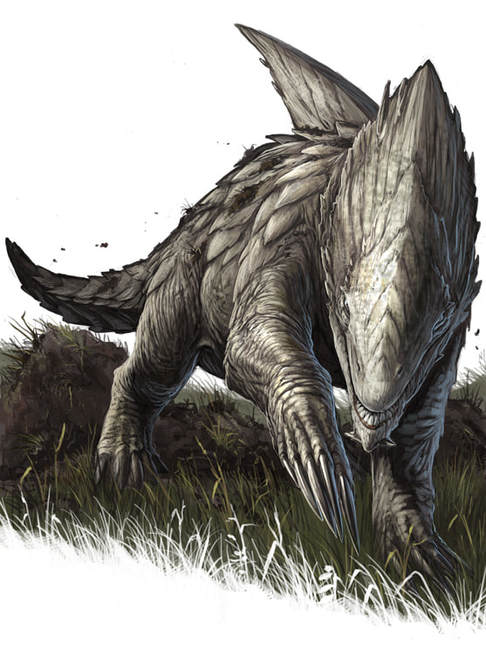
BULETTE
Also known as a land shark, the bulette is a heavily scaled carnivorous monster that burrows through the earth and attacks unsuspecting victims from below. Originally inspired by a cheap plastic toy, the bulette was one of the first monsters specifically created for D&D, and has been included in every edition of D&D, although various aspects of the monster have changed from edition to edition.
Also known as a land shark, the bulette is a heavily scaled carnivorous monster that burrows through the earth and attacks unsuspecting victims from below. Originally inspired by a cheap plastic toy, the bulette was one of the first monsters specifically created for D&D, and has been included in every edition of D&D, although various aspects of the monster have changed from edition to edition.
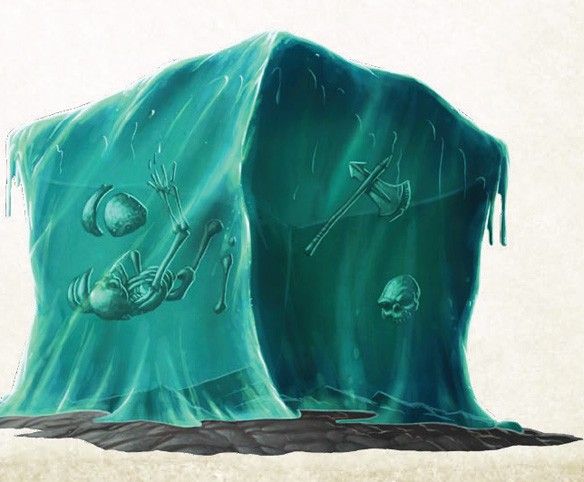
GELATINOUS CUBE
An invention of Gary Gygax in 1977, the gelatinous cube is a ten-foot cube of transparent gelatinous ooze, which can absorb and digest organic matter.
An invention of Gary Gygax in 1977, the gelatinous cube is a ten-foot cube of transparent gelatinous ooze, which can absorb and digest organic matter.
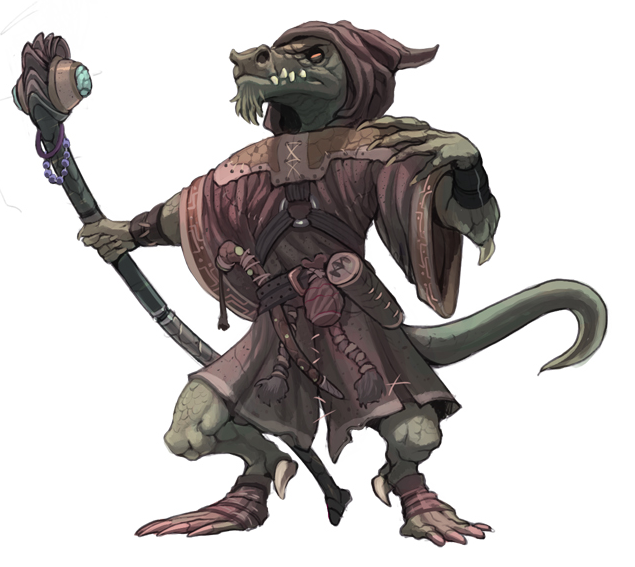
KOBOLD
These creatures are a sadistic and cowardly race who contest with humans and demi-humans for land and food. Kobolds are only 3 feet tall and yap like a dog to communicate, and because of this, they are often not taken seriously. While they are not big and may not look strong, Kobolds are ferocious and tenacious. The Kobold society is tribal and they typically live in darker places underground and in overgrown forests. Because of their small stature they are easy prey for larger creatures which might be one of the reasons these creatures are so cruel.
These creatures are a sadistic and cowardly race who contest with humans and demi-humans for land and food. Kobolds are only 3 feet tall and yap like a dog to communicate, and because of this, they are often not taken seriously. While they are not big and may not look strong, Kobolds are ferocious and tenacious. The Kobold society is tribal and they typically live in darker places underground and in overgrown forests. Because of their small stature they are easy prey for larger creatures which might be one of the reasons these creatures are so cruel.
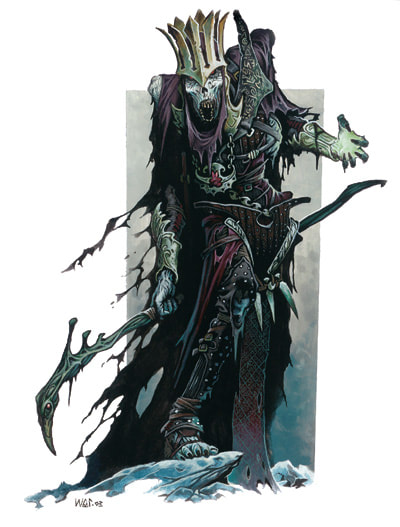
LICH
A lich is an undead spellcaster that used to be a living mage. A mage becomes a lich by means of necromancy, using a magical receptacle called a Phylactery to store the lich's soul. In some sources the method of becoming a lich is referred to as the Ritual of Becoming or Ceremony of Endless Night. The process is often described as requiring the creation and consumption of a deadly potion, the Elixir of Defilation, which is to be drunk on a full moon; although the exact details of the potion are described differently in various sources, the creation of the potion almost universally entails acts of utter evil, such as using as an ingredient the blood of an infant slain by the potential lich's own hand, or other, similarly vile components. The potion invariably kills the drinker but if the process is successful, it rises again some days later as a Lich.
Unlike most other forms of undead creatures, the Lich retains all of the memories, personality, and abilities that it possessed in life.
A lich is an undead spellcaster that used to be a living mage. A mage becomes a lich by means of necromancy, using a magical receptacle called a Phylactery to store the lich's soul. In some sources the method of becoming a lich is referred to as the Ritual of Becoming or Ceremony of Endless Night. The process is often described as requiring the creation and consumption of a deadly potion, the Elixir of Defilation, which is to be drunk on a full moon; although the exact details of the potion are described differently in various sources, the creation of the potion almost universally entails acts of utter evil, such as using as an ingredient the blood of an infant slain by the potential lich's own hand, or other, similarly vile components. The potion invariably kills the drinker but if the process is successful, it rises again some days later as a Lich.
Unlike most other forms of undead creatures, the Lich retains all of the memories, personality, and abilities that it possessed in life.
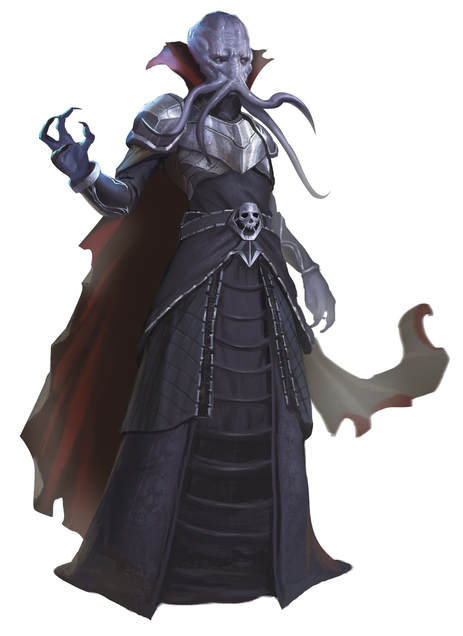
MIND FLAYER
Also known as an Illithid, mind flayers are monstrous humanoid aberrations with psionic powers. In a typical D&D campaign setting, they live in the moist caverns and cities of the enormous Underdark. They believe themselves to be the dominant species of the multiverse and use other intelligent creatures as thralls, slaves, and chattel. Mind flayers are well known for making thralls out of other intelligent creatures, as well as feasting on their brains.
Also known as an Illithid, mind flayers are monstrous humanoid aberrations with psionic powers. In a typical D&D campaign setting, they live in the moist caverns and cities of the enormous Underdark. They believe themselves to be the dominant species of the multiverse and use other intelligent creatures as thralls, slaves, and chattel. Mind flayers are well known for making thralls out of other intelligent creatures, as well as feasting on their brains.
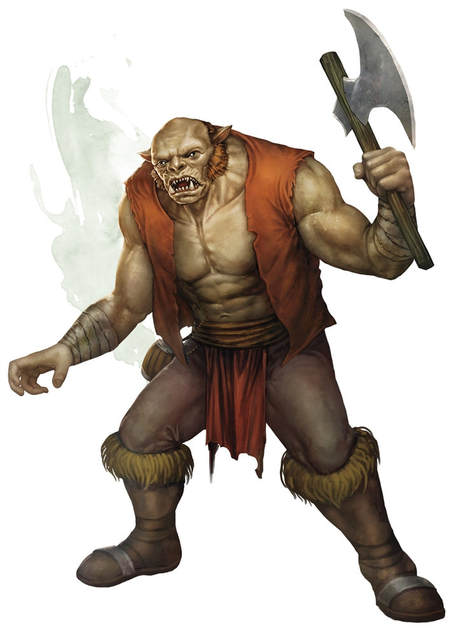
OGRE
Ogres are huge humanoid creatures that survive through raids and theft. An ogre stands about 9 to 10 feet tall and has a skin tone ranging from yellow to a dull black-brown. They also have long, greasy hair and have an odor that is similar to curdled milk. Ogres live in tribes and can be found almost anywhere in the world. Ogres will eat anything to survive, especially elf, dwarf, and halfling flesh.
Ogres are huge humanoid creatures that survive through raids and theft. An ogre stands about 9 to 10 feet tall and has a skin tone ranging from yellow to a dull black-brown. They also have long, greasy hair and have an odor that is similar to curdled milk. Ogres live in tribes and can be found almost anywhere in the world. Ogres will eat anything to survive, especially elf, dwarf, and halfling flesh.
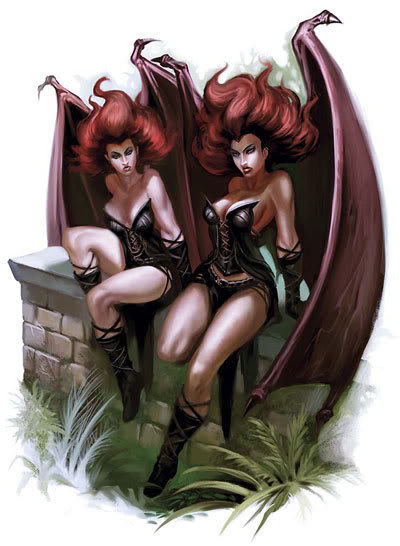
SUCCUBUS/SUCCUBI
A succubus (succubi plural) is a female demon (in 4th edition a succubus is a devil). The objective of succubi is to tempt men to have sex with them and encounters often result in these mens' deaths. Succubi are native to the Abyss. A succubus in its natural state is in the shape and form of a beautiful human woman with demonic features, such as bat-like wings, tiny horns, and/ or a tail. However, the succubus may shape-shift into many forms. They often appear in the guise of a human woman without demonic features.
A succubus (succubi plural) is a female demon (in 4th edition a succubus is a devil). The objective of succubi is to tempt men to have sex with them and encounters often result in these mens' deaths. Succubi are native to the Abyss. A succubus in its natural state is in the shape and form of a beautiful human woman with demonic features, such as bat-like wings, tiny horns, and/ or a tail. However, the succubus may shape-shift into many forms. They often appear in the guise of a human woman without demonic features.
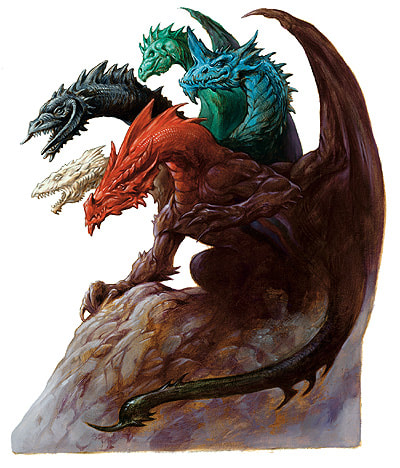
TIAMAT
A Babylonian goddess who takes dragon form, A five-headed dragon, she has one head for each customary color of chromatic dragon (black, blue, green, red, white), and each head has the powers of a member of the respective race of dragonkind. She proclaims herself as the creator of all evil dragonkind and is the queen of dragons. She is also a hateful, spiteful creature who never forgets who or what was wronged her. She will torture creatures as she pleases. Each head of the Tiamat will use a separate breath weapon for each head. In D&D, Tiamat is one of the most famous and most evil villains, and she is extremely difficult for any party of PCs to defeat.
A Babylonian goddess who takes dragon form, A five-headed dragon, she has one head for each customary color of chromatic dragon (black, blue, green, red, white), and each head has the powers of a member of the respective race of dragonkind. She proclaims herself as the creator of all evil dragonkind and is the queen of dragons. She is also a hateful, spiteful creature who never forgets who or what was wronged her. She will torture creatures as she pleases. Each head of the Tiamat will use a separate breath weapon for each head. In D&D, Tiamat is one of the most famous and most evil villains, and she is extremely difficult for any party of PCs to defeat.
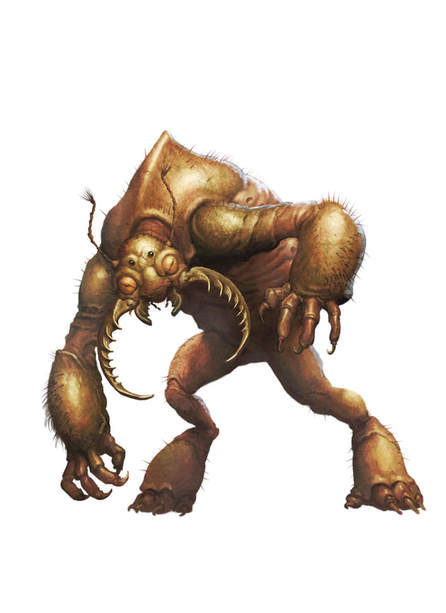
UMBER HULK
An umber hulk is a juggernaut of the Underdark, and more than a match for most groups of subterranean travelers. Fortunately for its prey, an umber hulk usually hunts alone. Resembling a cross between a great ape and a beetle, an umber hulk has a broad, sharp-toothed mouth between an enormous pair of scythe-like mandibles. Armored plates cover its massive frame, with scattered feelers poking from its body like sparse hair. Four eyes adorn its rounded head—two like an ape’s eyes, and two compound beetle eyes that confuse any creature meeting the umber hulk’s gaze.
Umber hulks can burrow through solid rock, forming new tunnels in their wake. Rubble flies behind them as they move, and experienced creatures that hear the telltale clamor of an umber hulk’s digging know to keep well away. A burrowing umber hulk rampages through tunnels and caverns without concern for the destruction caused by its digging. The steel-hard chitin of its body can withstand the cave-ins, tunnel collapses, and rock falls that commonly follow it.
An umber hulk is a juggernaut of the Underdark, and more than a match for most groups of subterranean travelers. Fortunately for its prey, an umber hulk usually hunts alone. Resembling a cross between a great ape and a beetle, an umber hulk has a broad, sharp-toothed mouth between an enormous pair of scythe-like mandibles. Armored plates cover its massive frame, with scattered feelers poking from its body like sparse hair. Four eyes adorn its rounded head—two like an ape’s eyes, and two compound beetle eyes that confuse any creature meeting the umber hulk’s gaze.
Umber hulks can burrow through solid rock, forming new tunnels in their wake. Rubble flies behind them as they move, and experienced creatures that hear the telltale clamor of an umber hulk’s digging know to keep well away. A burrowing umber hulk rampages through tunnels and caverns without concern for the destruction caused by its digging. The steel-hard chitin of its body can withstand the cave-ins, tunnel collapses, and rock falls that commonly follow it.
